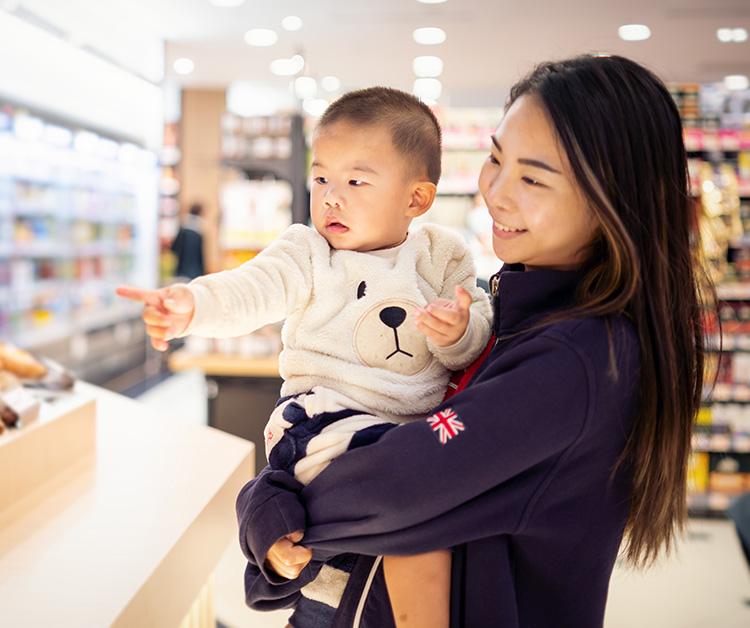
Early waving and pointing is meaningful. Learn more about the power of these early language skills, and how to encourage your little one in this stage of baby language development.
Medically reviewed by a board-certified pediatrician
Sure, it’s cute to watch your little one wave goodbye, but it’s also an important baby language development. In fact, this one simple action shows they’re learning language. An exciting bit of progress! Babies use gestures to communicate while they’re mastering speech. According to researchers, baby gestures reveal a lot about your child’s language development.
A four-year study at the University of Chicago* provided insight into the power of baby gestures. Researchers videotaped children interacting with their mothers and analyzed the spoken and gestural communications of both parents and children.
This study led to two interesting takeaways:
Other research has also found that gesturing is part of a child’s earliest language development.
Here's how all that baby language development research can help you interact with your baby:
While their sweet little gestures are super cute, they’re also super meaningful in terms of baby language development. Who knew? Well, now you! Help your infant communicate even more in the coming months.
*Reported in American Psychologist in 2014
All information on Enfamil, including but not limited to information about health, medical conditions, and nutrition, is intended for your general knowledge and is not a substitute for a healthcare professional's medical identification, advice, or management for specific medical conditions. You should seek medical care and consult your doctor or pediatrician for any specific health or nutrition issues. Never disregard professional medical advice or delay seeking medical treatment, care, or help because of information you have read on Enfamil.